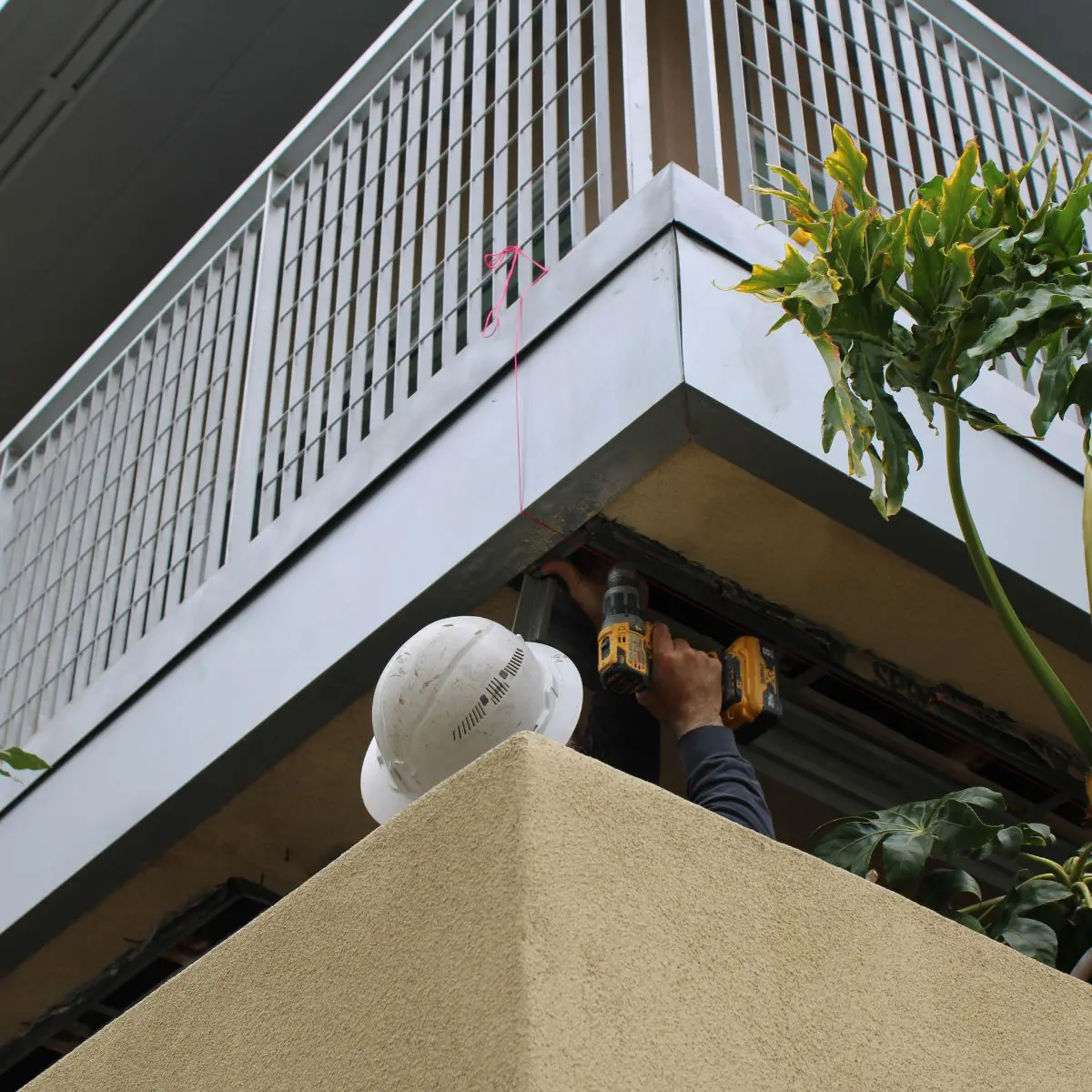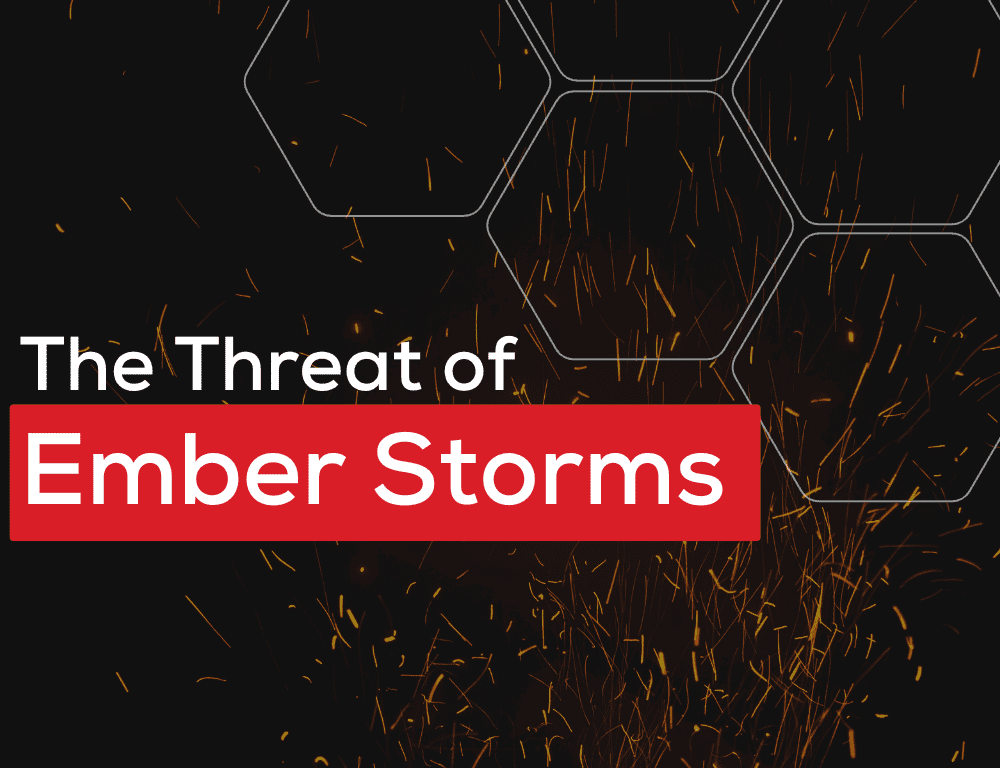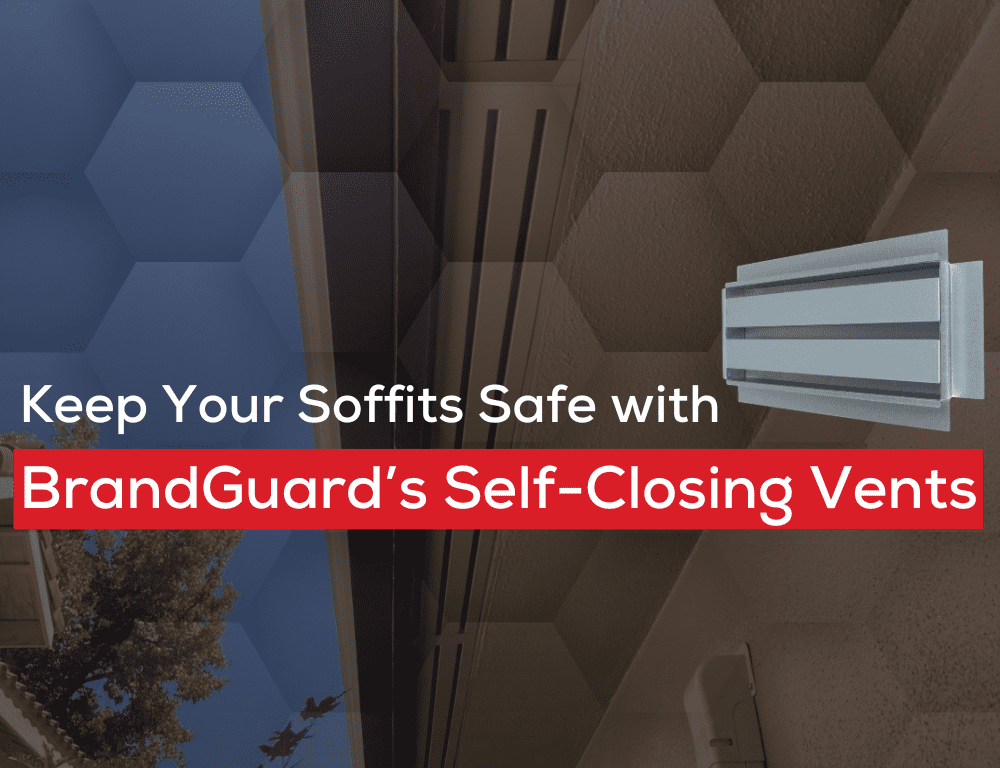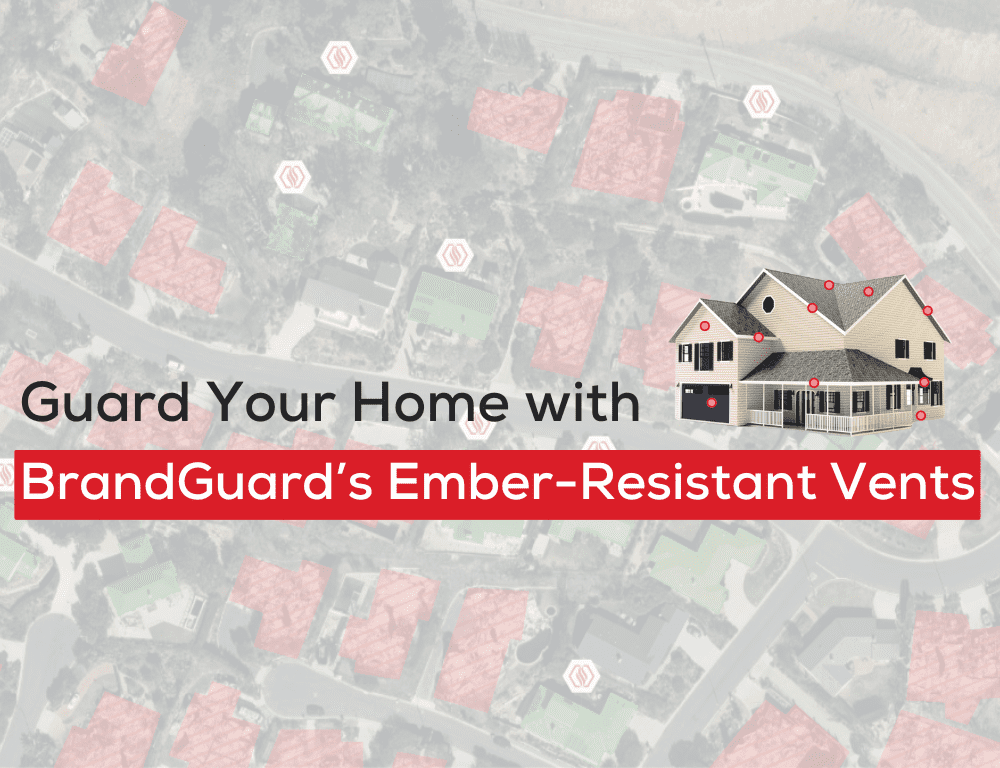Blogs & News
Explore Our Technology: Balcony Vents
Discover how BrandGuard’s Balcony Vents play a crucial role in keeping multi-family communities safe from hot ember storms.
A private outdoor area in an urban landscape. Additional living space in attached town homes and condos. Why wouldn’t you want a balcony? Whether you are an architect designing or a resident living in a multi-family complex, the benefits of incorporating a balcony are unmatched – especially in the state of California.
However, as construction progresses – so does the recognition of potential life safety hazards.
From the growing threat of wildfires to their structural integrity, balconies have been diagnosed with various safety issues. As a result, building code officials have adopted several code requirements to ensure your community’s safety remains intact.
In this article, we will be addressing safety hazards associated with balconies and how we can resolve these hazards in our current and future communities. Let’s get started!
Examining the Integrity.
Over the past several years, balcony incidents have produced a significant volume of injuries to California residents. The culprit? The composition of the balcony being neglected – resulting in the overall structure weakening.
With their dedication to protecting our communities, California building officials have passed two codes that now require properties to undergo stringent inspection procedures, SB-326 and SB-721.
SB 721(Apartment Buildings): This law applies to multifamily rental properties with three or more units. The first SB721 inspection must be completed by January 1, 2026, for buildings constructed before 2019. After this initial balcony inspection, re-inspections are required every six years to maintain ongoing safety compliance.
Note: This inspection emphasizes the load-bearing components and waterproofing systems. Additionally, there is a heightened focus on wood-framed balconies due to their susceptibility to decay and deterioration.
SB326 (Condos & HOAs): This law applies to condominium complexes and other common interest developments managed by HOAs. The first SB326 inspection was due January 1, 2025. Subsequent balcony inspections under SB326 are required every nine years thereafter to ensure continued structural integrity.
Note: Similar to the SB721 requirements, the SB326 code focuses on load-bearing components and waterproofing systems. However, there is an additional emphasis on assessing the safety of railings, guardrails, and walking surfaces in common areas.
With the adoption and enforcement of the California Building Codes SB721 and SB326, communities have been able to have peace of mind when it comes to their balcony’s structural integrity.


Integrating Balcony Vents into Existing Multi-Family Communities.
In addition to the California SB-721 and SB-326 codes, a large volume of multifamily communities has introduced balcony air vents into these structural additions. Known for its ability in improving temperature regulation and maintaining moisture control, balcony vents help strengthen the balcony’s overall composition.
Unfortunately, these air vents open a threat to the building and its occupants – their defense against wildfires. As communities develop in high-risk wildfire zones, their exposure to damages are extremely heightened – especially if their balcony possesses air vents.
With the vent’s unprotected openings, hot embers and growing flames can easily access the inner workings of the structure – resulting in a building’s ignition.
Defending Embers in Real Time.
To keep Californians safe from home ignitions, building code officials passed Chapter 7A in the California Building Code. In short, Chapter 7A establishes requirements for fire and smoke protection features in building elements – such as air ventilation systems. Additionally, this code outlines standards for ignition-resistant construction and ember-resistant materials.
With these standards in place, property owners and HOAs are now required to include appropriate passive fire protection, such as ember-resistant balcony vents, into their structures. Installing fire-rated vents, such as BrandGuard’s Balcony Vents, adds a strong layer of protection against ember storms and flames produced by wildfires.
With the added layers of home hardening practices, California residents will be able to maintain peace of mind, in the event of a wildfire outbreak.
BrandGuard Balcony Vents vs Traditional Technology.
However, there’s a problem. How do property managers, tenants, and homeowners maintain the stringent building code adoptions – SB 721, SB 326 and Chapter 7A? Simply, BrandGuard’s 1 Hour Ember- and Flame-Resistant Balcony Inspection Vents.
Designed for easy removal, our Balcony Vents make it possible to avoid costly repair work caused by regular inspections, unlike traditional fire-rated vents. In addition to its easy installation and removal, BrandGuard’s Balcony Vents have undergone thorough testing, including adherence to California Building Code Chapter 7A and standards ASTM E2886 and E119.
But what is the true difference between BrandGuard Vents versus other fire-rated air vents? Our Triple Layer of Defense.
Formulated with an overlapping baffle design, self-closing intumescent technology, and layer of 1/16” mesh, our ember-resistant Balcony Inspection Vents extinguish any embers, flames, and high temperatures trying to enter your structure.

Key Takeaways
In conclusion, BrandGuard’s Balcony Vents offer a crucial upgrade for multi-family communities, especially in designated wildfire-prone (WUI) areas. With our advanced wildfire defense technology, our vents ensure structural integrity while maintaining a strong line of defense against embers and flames. Finally, property owners and managers can easily comply with strict building regulations while simultaneously maintaining peace of mind, knowing their balconies are equipped with state-of-the-art wildfire protection. Let’s Build Back Better. Build with BrandGuard.
Related Posts
-

Uncover and understand the leading threat of home safety in WUI zones – wind-blown embers, the number one cause of…
-

Discover how you can harden your home’sstandard and continuous soffit ventsfrom wind-blown embers, hightemperatures, and flames. Often, homeowners only see…
-

Explore how homeowners who reside in WUI zones can protect themselves, their families, and their homes from the destruction of…
